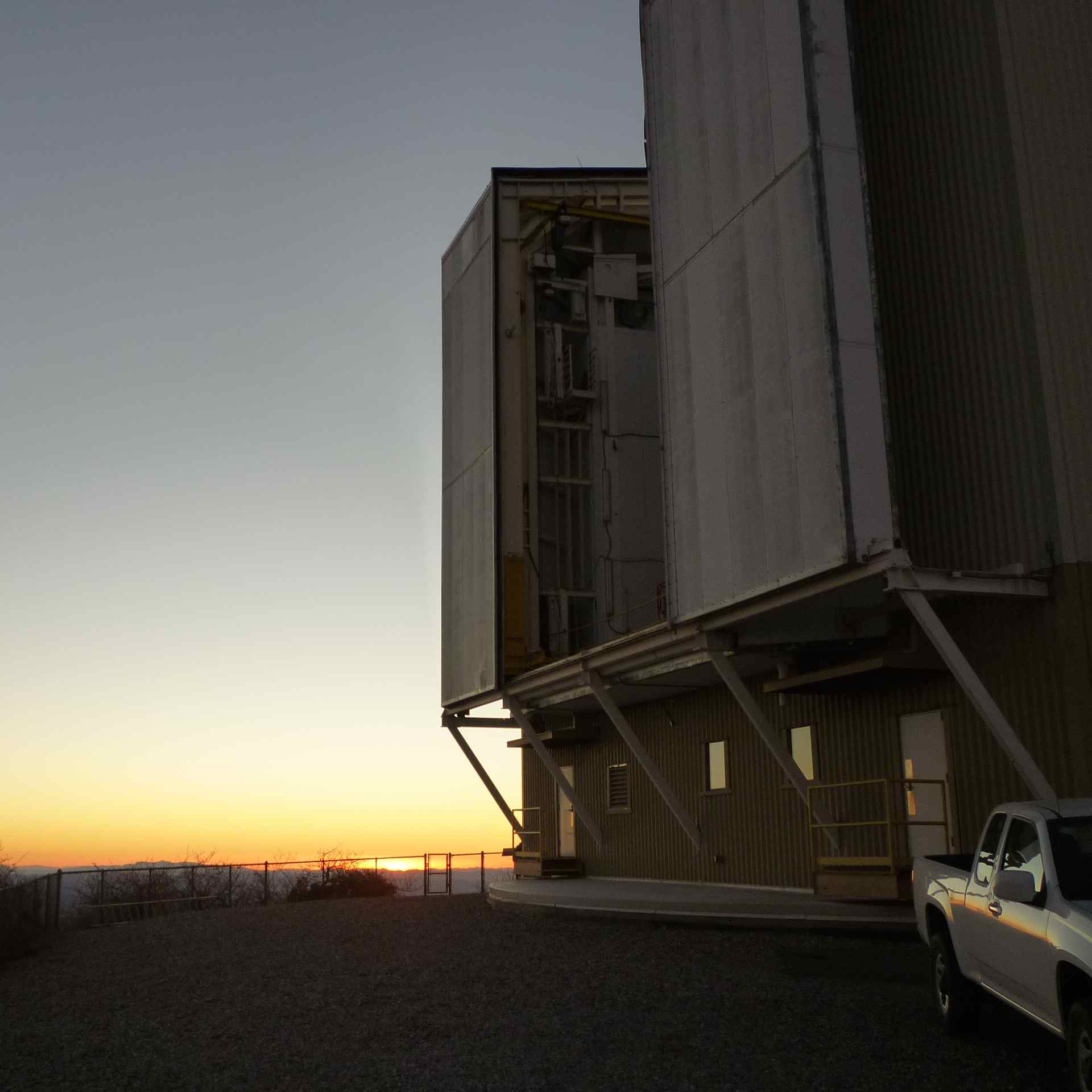In a nutshell
I am a tenured Research Scholar in the Department of Astrophysical Sciences at Princeton University. I'm the Chair of resolved extragalactic science for the Hyper Suprime-Cam Survey, I'm heavily involved in the development of the Prime Focus Spectrograph Survey and I am active member of the JWST/UNCOVER survey. In Peyton Hall, I mentor several of our graduate students, and I'm the Chair of Princeton's observing program on the Magellan Baade/Clay and WIYN telescopes. I like to think about the physical mechanism by which all supermassive black holes grow, as well as understanding the interplay between Active Galactic Nuclei and the properties of the galaxies in which they reside.
Latest Research
The First Black Holes
UHZ-1 & Black Hole Seeds
VIEW PAPER
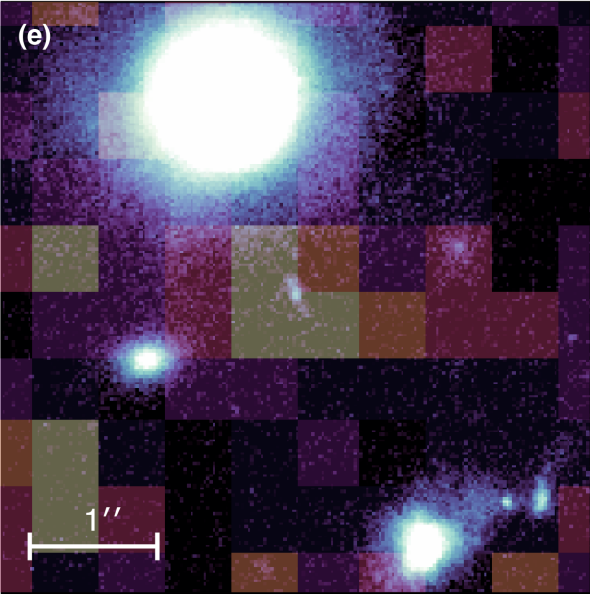
The most distant Supermassive Black Hole in the Universe
Using the James Webb Space Telescope we are now finding early black holes as they transition from “seeds” to supermassive BHs.
In Goulding & Greene (2022), we outline a methodology to find the first black hole seeds using JWST images.
In Bogdan, Goulding et al. (2023) we discovered an X-ray luminous supermassive black hole, UHZ-1,
that existed only 400 million years after the Big Bang.
Harnessing the exquisite sensitivity of JWST-NIRSpec, in Goulding et al. (2023). we provided spectroscopic confirmation of UHZ-1 at z = 10.073.
The black hole's host galaxy is measured to be low-mass with only 100 million solar masses of stellar material, similar to the predicted mass of the black hole,
suggesting that it grew from a heavy seed. Learn more here
See our press coverage on
NASA,
CNN,
NBC,
ABC,
Fox,
CBS,
Sky,
Washington Post,
Science Magazine,
Nature,
Scientific American,
USA Today,
Princeton University, and
AAS Nova
Merging Supermassive Black Holes
Black Holes & Gravitational Waves
VIEW PAPER
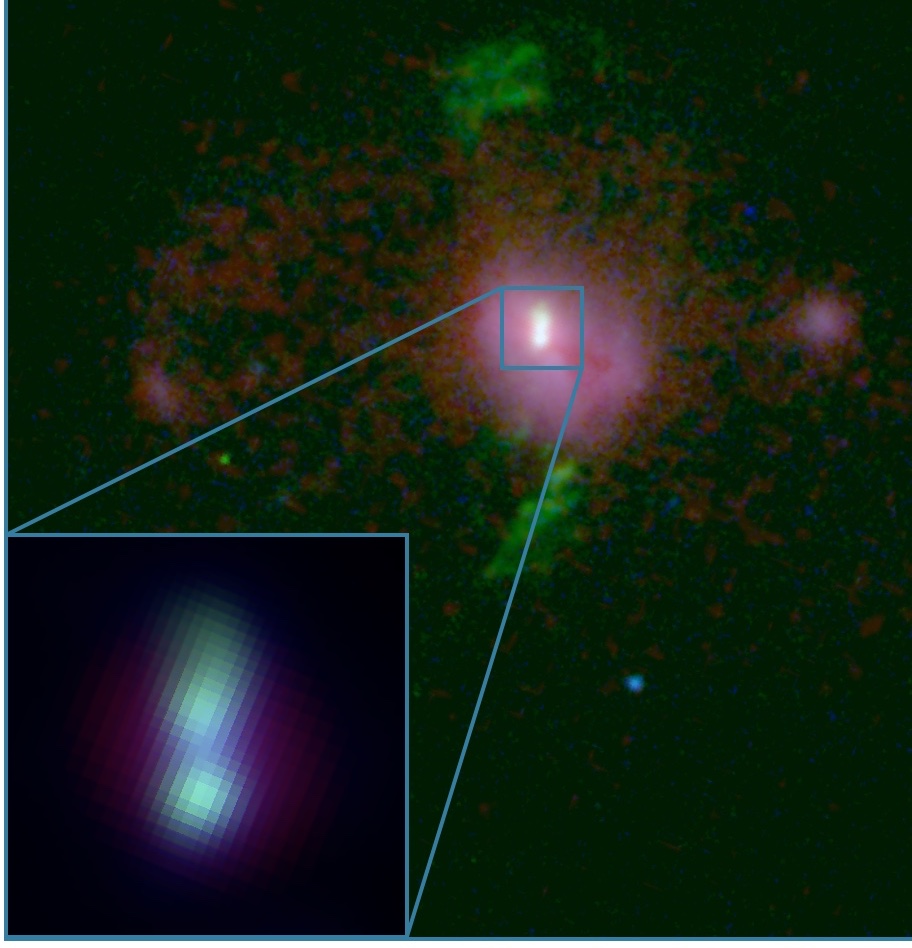
Setting the Gravitational Wave Background with a pair of Merging Supermassive Black Holes
The most massive black hole binaries are expected to dominate the as-yet undetected gravitational wave background that are accessible to Pulsar Timing Arrays. We currently lack firm empirical constraints on the amplitude of the gravitational wave background due to the lack of confirmed extremely massive black hole binaries. Using the Hubble Space Telescope, we have discovered a distant quasar with two massive merging black holes at its heart. We expect this black hole pair to merge in around 2.5 billion years, roughly the Universe lookback time at the distance to the galaxy. We predict that quasar binaries similar to this will make up the majority of the graviational wave background signal that should be detected in the next years. But, if this signal is not found then this could indicate that the most massive black holes merge only over extremely long timescales, remaining as close separation binaries for many Hubble times, the so-called ‘final-parsec problem’.
See our press coverage at
Princeton University
and
the Simons Foundation.
X-ray Halos of Galaxies
LX-T in the most massive galaxies
VIEW PROJECT
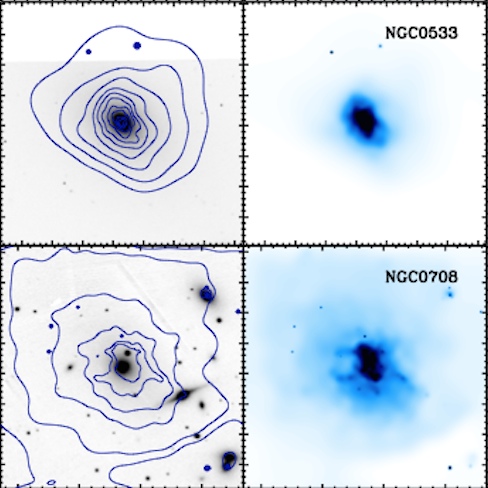
The X-ray halos of the most massive galaxies in the universe
Studies of the physical properties of local elliptical galaxies are beginning to shed new light on galaxy formation. In our latest paper, linked with the MASSIVE collaboration, we have sought to understand the physical link between the luminosity and temperature of the X-ray gas that surrounds massive galaxies with the properties of the galaxy which resides within. We found that despite the vastly differing gravitational scales, the gas temperature and luminosity of the inner-most 10–30 kpc region of a galaxy group or cluster are set entirely by the properties of the central galaxy, and not the wider-scale environment. Furthermore, we found that the vast majority of elliptical galaxies maintain pressure-supported hot gas consistent with the virial temperature when measured on galaxy scales. By harnessing the exquisite spatial resolution and sensitivity of the Chandra X-ray telescope combined with optical integral field spectroscopy, we have now provided a consistent and unbiased picture of the hot gas content of massive early-type galaxies over the largest stellar mass baseline (to date) that simultaneously covers a wide-range in environment and galaxy dynamics.
X-ray Halos of Galaxies
Black Holes & Dark Matter
VIEW PROJECT
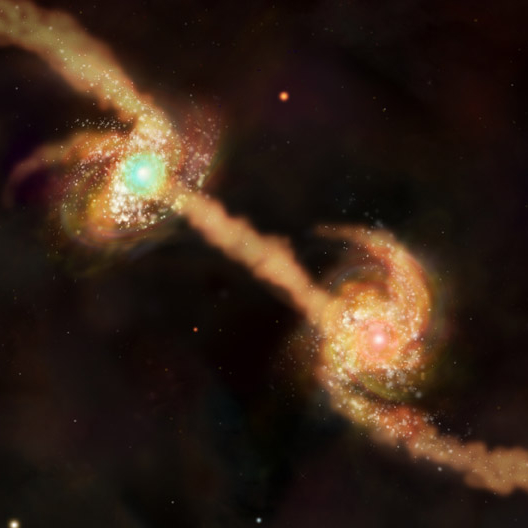
Connecting Dark Matter Halos & Supermassive Black Holes
Observational studies of nearby galaxies have demonstrated
correlations between the mass of the central supermassive
black holes and properties of the host galaxies. Motivated
by these correlations, the theoretical paradigm has
emerged in which BHs and bulges coevolve. We studied 3130
elliptical galaxies selected from the Sloan Digital and
ROSAT All Sky Surveys and demonstrated that the central
stellar velocity dispersion exhibits a significantly
tighter correlation with the total gravitating mass,
traced by the X-ray luminosity of the hot gas, than with
the stellar mass. This hints that the central stellar
velocity dispersion, and hence the central gravitational
potential, may be the fundamental property of elliptical
galaxies that is most tightly connected to the
larger-scale dark matter halo.
See our press coverage at the
Harvard-Smithsonian
and on
CNET
, and the
Discovery Channel.
AGN-Galaxy Connections
Evolution of AGN Host Galaxies
VIEW PROJECT
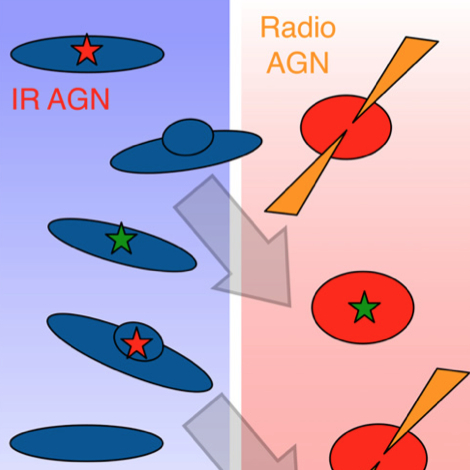
The evolution of AGN host galaxies throughout the last 9 billion years
AGN are capable of releasing enormous quantities of energy over their lifetimes, comparable to the binding energy of their hosts. In light of this, many galaxy-evolution simulations now incorporate AGN feedback as a form of self regulation for BH growth and star formation. The links between AGN and host evolution should be reflected in the galaxy characteristics. By harnessing the immense statistical power of the SDSS, Bootes and DEEP2 surveys, we identified AGN at X-ray, infrared and radio wavelengths out to z=1.4. We found that BHs undergoing radiatively-efficient accretion appear to be hosted in a separate and distinct galaxy population than AGN undergoing powerful mechanically dominated accretion. Radiatively efficient AGN appear to be preferentially hosted in modest star-forming galaxies, with little dependence on AGN or galaxy luminosity. AGN exhibiting radio-emitting jets due to mechanically-dominated accretion are almost exclusively observed in massive, passive galaxies. Crucially, we show that these different accretion-mode AGN have remained as separate galaxy populations throughout the last 9 Gyr.
Compton-thick AGN
Mid-IR Host-Galaxy Extinction
VIEW PROJECT
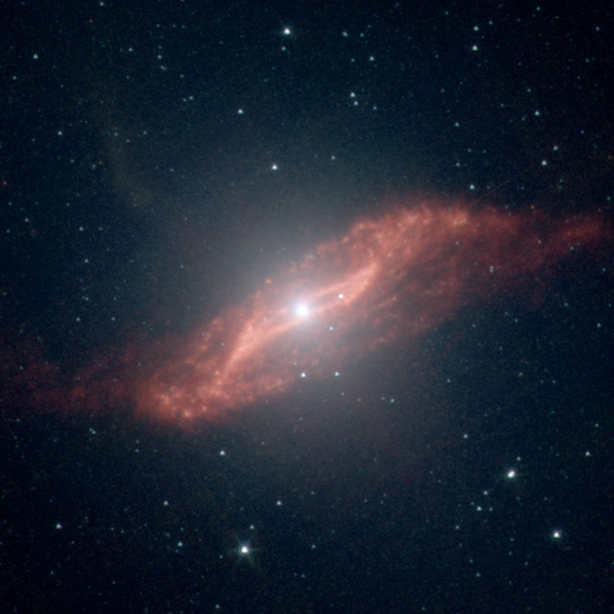
Mid-IR Host-Galaxy Extinction in Compton-thick AGN
In nearby optical and radio-selected AGN, a weak correlation between gas column density and silicate (Si) absorption strength has been observed from Spitzer spectroscopy suggesting that selection of sources with strong Si-absorption is a good method to find the most heavily obscured AGN, i.e., Compton-thick sources. To first-order, these results would appear to agree with those predicted by simple uniform torus models. However, there is growing evidence that not all of the dust extinction can be attributed to an obscuring central torus. Indeed, we found that those Compton-thick AGN that exhibit strong Si-absorption features in the mid-infrared are hosted in highly inclined and/or merging galaxies, providing strong evidence that significant dust attenuation occurs within the AGN host-galaxy. This host-galaxy extinction is capable of hiding optical emission-line signatures in ~25-50% of nearby AGN
Collaborations, Friends & Colleagues
MASSIVE:
Exploring the largest galaxies in the Universe
Learn More

HyperSuprimeCam Survey
Galaxy evolution across 1400 deg2
Learn More

Multi-λ Surveys
Black holes throughout cosmic time
Learn More
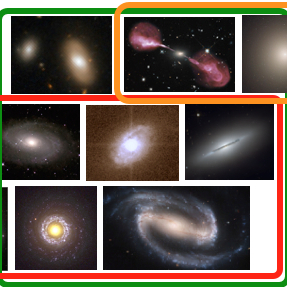
STACKFAST
Breaking through the noise floor in X-rays
Learn More

Jenny Greene
Princeton University
Learn More

Dave Alexander
Durham University
Learn More

Bill & Christine Forman
Harvard-Smithsonian Center for Astrophysics
Learn More
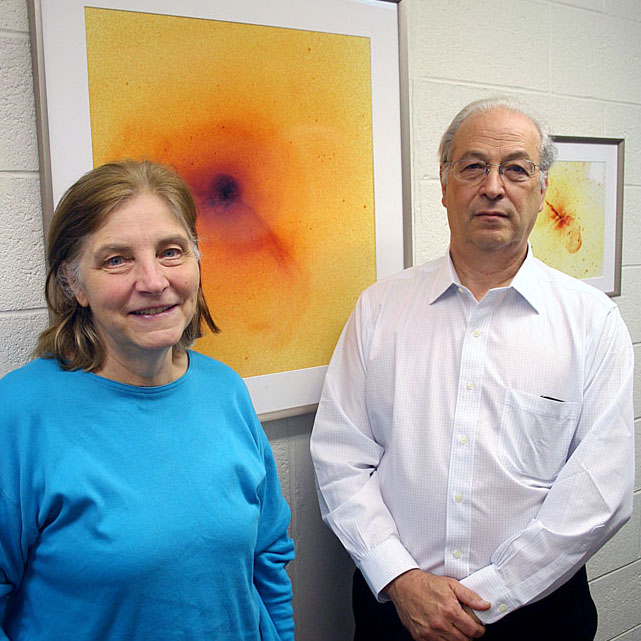
Ryan Hickox
Dartmouth College
Learn More

My life in pictures
